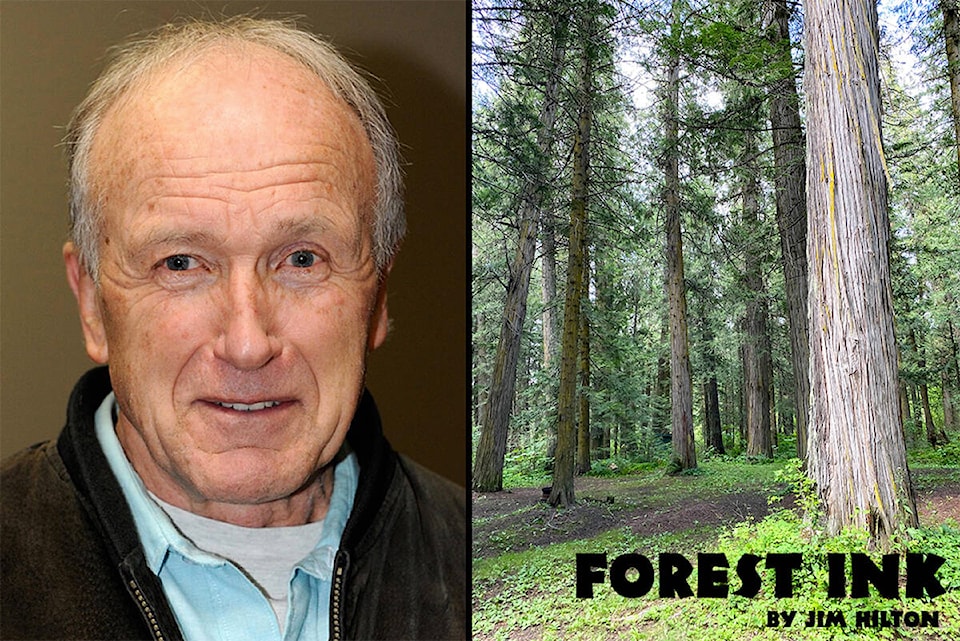Anyone living in the B.C. Interior, especially near the eastern mountains will be interested in the book “British Columbia’s Inland Rainforest” by Susan Stevenson and 14 co-authors.
While this 300-plus page text book is a fairly technical document, it is an excellent source for anyone interested in the basics of our forest industry and how foresters have been trying to get a balance of timber production and good ecosystem management.
For those who like to get out into the woods and may be new to forest management it is an excellent guide to see first hand what results when we have practice clearcutting in an attempt to replace so-called “decadent forests” with faster-growing monocultures.
If you have a more global perspective you could start a review of our inland rainforests and see how they compare to countries like Chile and Argentina, Australia, Tasmania, New Zealand and Europe.
As discussed in the book the majority (98 per cent) of temperate rainforests are coastal with the majority found in western North America with about half of coastal and interior being modified.
Our B.C. inland rainforests are 500 km from the coast in our eastern mountain ranges, including the Cariboo Mountains, and have resulted from the maritime air masses from the west depositing moisture as they are pushed over the mountains.
While there have been considerable scientific studies done on the intermountain ecosystems, the information has been scattered in a wide variety of sources hence one of the main reasons for this book is to collate this material into a single source.
With the recent record wildfires adding to the CO2 load, the section on historical logging practices is very relevant since the practice of replacing old decadent cedar hemlock stands with pine and spruce often meant that large volumes of unmerchantable wood was burned on site to allow for planting of new tree seedlings. The forests are divided into the wet cool and very wet cool interior cedar hemlock zone in the valley bottoms often around lakes from Prince George to Arrow Lakes in the south. This includes Quesnel Lake and Horsefly Lake.
I think most readers will find the last two chapters very informative.
Chapter 8: Managing Ecological Landscape patterns and process ;and Chapter 9: A vision for Unique Ecosystems describes how researchers want to share their experience and visions for the future for these unique and important ecosystems.
As described in the back cover of the book, past governments have encouraged the forest industry to clearcut the “decadent “ old stands and replace them with rapid-growing young trees of other species but more recently — out of concern for the ecological consequences of such practices — researchers and managers have begun to examine alternate approaches.
Figure 8.3 shows how pre-existing clearcuts, old selective logging and a 40-year-old burn are integrated with a protection zone, structural diversity zone and intensive management zone.
Lots and maps, charts and pictures in the book will help readers relate to this very unique rainforest. Hopefully they will take time to visit and stay a while to appreciate how fortunate we are to have these ecosystems in our backyard.
Don’t miss out on reading the latest local, provincial and national news offered at the Williams Lake Tribune. Sign up for our free newsletter here.
